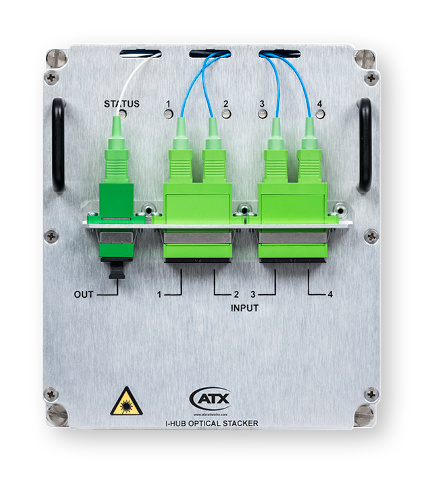Opto-Stacker
**DISCONTINUED**
ATX’s I-HUB opto-stacker is a high density, high performance solution to quadruple return path bandwidth per wavelength. It ingests 4 independent upstream optical inputs, stacks them onto 1 upstream 1550nm transmitter to be sent back to the headend and be destacked into the original independent returns by a TranScend or ChromaFlex destacker module. The opto-stacker module is a double-slot module, enabling a fully loaded I-HUB platform to transport the return streams of up to 20 nodes on a single fiber for a distance up to 60 km. Superior bandwidth over comparable digital return solutions is obtained.

